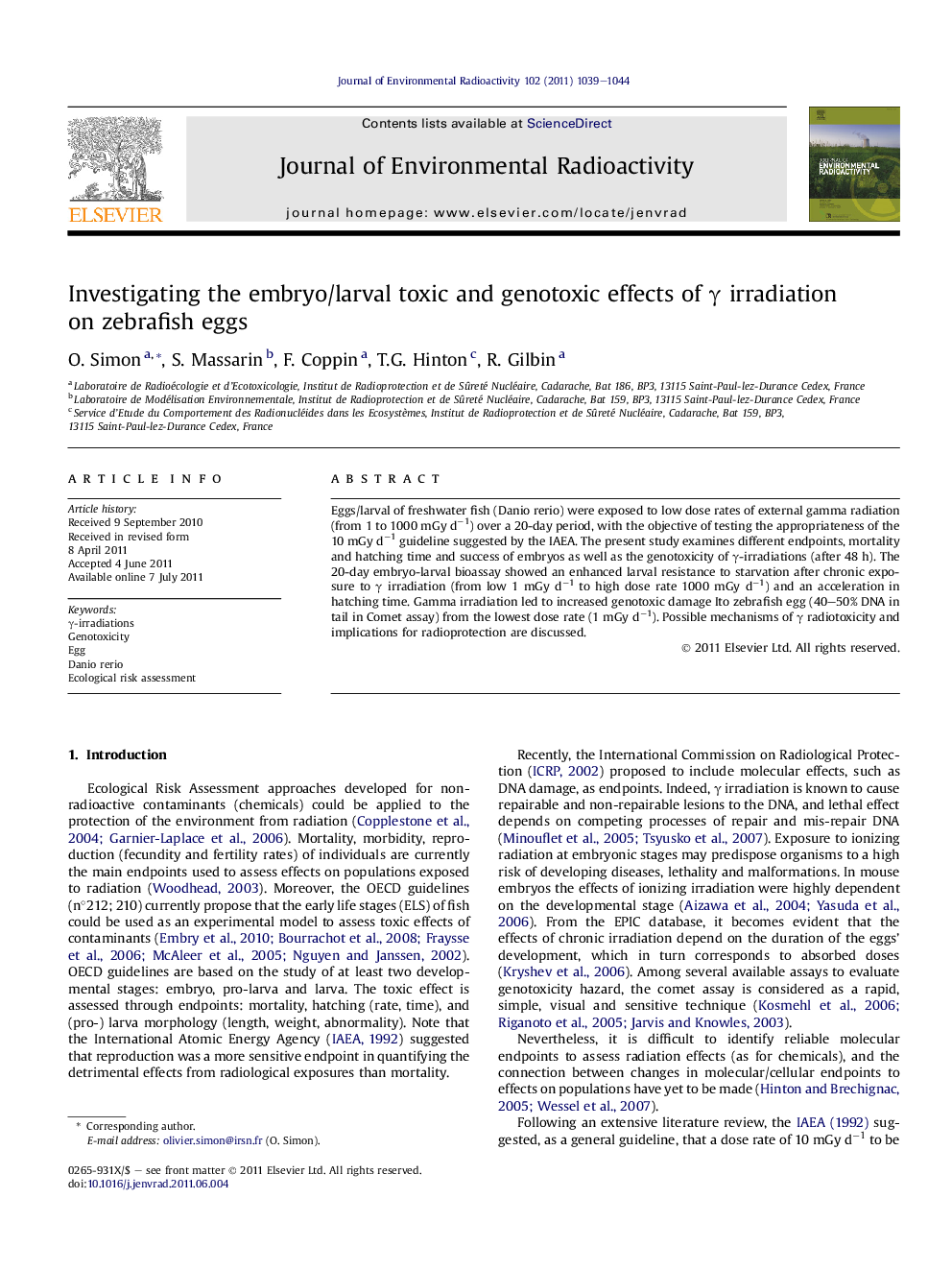| Article ID | Journal | Published Year | Pages | File Type |
|---|---|---|---|---|
| 1738630 | Journal of Environmental Radioactivity | 2011 | 6 Pages |
Eggs/larval of freshwater fish (Danio rerio) were exposed to low dose rates of external gamma radiation (from 1 to 1000 mGy d−1) over a 20-day period, with the objective of testing the appropriateness of the 10 mGy d−1 guideline suggested by the IAEA. The present study examines different endpoints, mortality and hatching time and success of embryos as well as the genotoxicity of γ-irradiations (after 48 h). The 20-day embryo-larval bioassay showed an enhanced larval resistance to starvation after chronic exposure to γ irradiation (from low 1 mGy d−1 to high dose rate 1000 mGy d−1) and an acceleration in hatching time. Gamma irradiation led to increased genotoxic damage Ito zebrafish egg (40–50% DNA in tail in Comet assay) from the lowest dose rate (1 mGy d−1). Possible mechanisms of γ radiotoxicity and implications for radioprotection are discussed.
► Relevant information on the γ radiation impact on early life stage biota is scarce. ► The eggs of zebrafish Danio rerio were selected as biological model. ► We test the appropriateness of the 10 mGy d−1 guideline (IAEA). ► We observed effects measured at individual levels (starvation, hatching time). ► Chronic gamma irradiation led to increased genotoxic damage to zebrafish egg. ► γ radiotoxicity mechanisms and implications for radioprotection are discussed.
